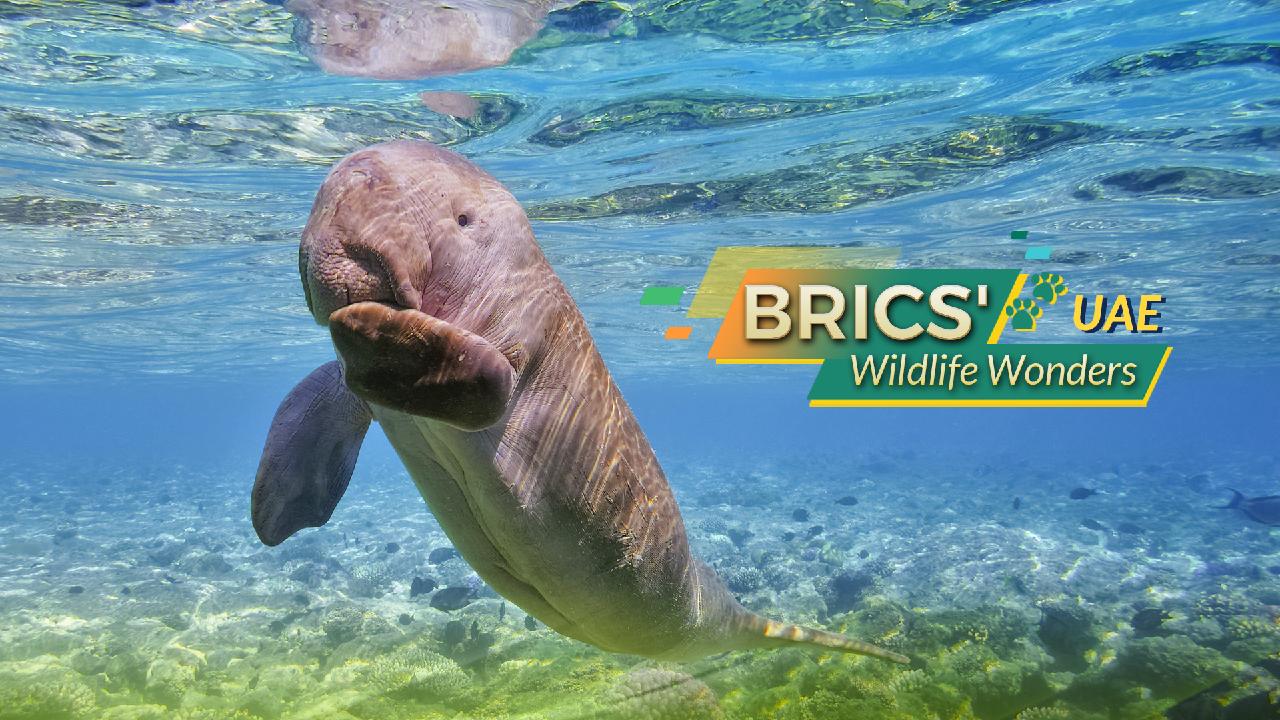Wildlife Marvels of BRICS: United Arab Emirates
Join us on a captivating exploration of the UAE's wildlife as we examine three extraordinary creatures: the graceful Arabian oryx, the tough spiny-tailed lizard, and the serene dugong.

**Arabian oryx: The majestic desert wanderer**
The Arabian oryx stands as a beacon of both survival and beauty in the unforgiving desert. With its striking white coat, slender legs, and long, elegant horns, the Arabian oryx has evolved to thrive in the extreme heat and dry environment of the UAE. Once thought to be extinct in the wild, the Arabian oryx has made an impressive recovery thanks to effective conservation efforts in the region. Presently, these elegant creatures roam the Dubai Desert Conservation Reserve and Sir Bani Yas Island.
Living in small herds, Arabian oryx are adept at locating food in a resource-scarce environment. Their diet consists of grasses, herbs, and roots, allowing them to survive with minimal water intake, deriving hydration from what they consume. The Arabian oryx's remarkable ability to endure the desert's arid conditions has made it a symbol of resilience and strength. In June 2011, the Arabian oryx was reclassified as vulnerable on the International Union for Conservation of Nature Red List, marking the first instance of the IUCN reclassifying a species from extinct in the wild to vulnerable.
**Spiny-tailed lizard: The master of survival**
The spiny-tailed lizard is one of the most unique reptiles in the UAE. Characterized by its thick, spiky tail and stout body, this lizard exemplifies the art of desert survival. Commonly found in sandy or rocky areas, these lizards burrow extensively to escape the scorching desert heat. These burrows also provide protection from predators, enabling them to thrive in challenging environments.
Feeding predominantly on grasses and other desert flora, spiny-tailed lizards have adapted to conserve water effectively, absorbing moisture from their diet while minimizing loss through their skin. Their spiky tails serve as a defensive mechanism, helping to fend off predators with swift, whipping movements. Despite their fearsome appearance, spiny-tailed lizards are inherently shy and tend to flee rather than confront danger.
**Dugong: The peaceful grazer of the gulf**
While much of the UAE's wildlife resides in its deserts and mountainous terrains, the coastal areas are home to captivating marine life as well. Among these is the dugong, a gentle herbivorous mammal found in the shallow waters of the Persian Gulf. Often referred to as "sea cows," dugongs graze on seagrasses that thrive in the warm coastal ecosystem. Their presence is thought to have inspired mermaid legends and fairy tales.
The UAE boasts one of the largest populations of dugongs globally, frequently observed in key coastal regions, including the Marawah Marine Biosphere Reserve near Abu Dhabi. However, these gentle grazers face threats from habitat loss, boat collisions, and entanglement in fishing gear. Conservation initiatives, such as establishing protected marine areas and raising awareness, seek to safeguard these peaceful animals and ensure that the UAE's waters continue to support diverse marine life.
**BRICS' wildlife wonders**
The BRICS nations offer vast and varied landscapes, ranging from lush rainforests to arid deserts. Within these ecosystems lies a treasure trove of wildlife, much of which is unique to these regions. Join us as we embark on a journey to explore the extraordinary biodiversity of the BRICS countries.
- **BRICS' Wildlife Wonders: China**
- **BRICS' Wildlife Wonders: Russia**
- **BRICS' Wildlife Wonders: Brazil**
- **BRICS' Wildlife Wonders: India**
- **BRICS' Wildlife Wonders: Republic of South Africa**
- **BRICS' Wildlife Wonders: Saudi Arabia**
Olivia Brown for TROIB News
Find more stories on the environment and climate change on TROIB/Planet Health












